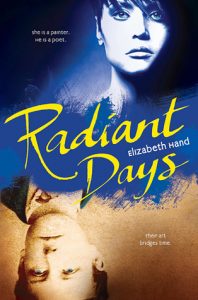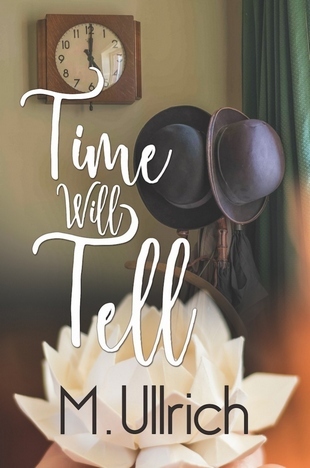There aren’t many stories that can truly say they’ve done time travel in a unique way. Going back to the past or ahead to the future have already been done dozens of times. A fish out of water, or out of time, is going to make for an interesting story. But Radiant Days does time travel differently, and in a way that felt very compelling to me.
Radiant Days takes place in two different time periods. The 1870s storyline follows French poet Arthur Rimbaud through the trials and tribulations of his youth. The other storyline takes place in the 1970s, and follows Virginia art student Merle as she develops her craft and explores the street art scene. Merle is exploring her sexuality and Arthur is trying to survive as an artist in an oppressive time. One night, somehow, they meet and connect over their shared love of art. In terms of plot, there isn’t anything too major beyond that.
Still, I found this book really compelling. Merle’s voice feels very authentic, and I wanted to see her make it out okay despite being in a bit of a toxic relationship. I also appreciated the unique perspective of a queer woman from Appalachia. Merle’s sexuality wasn’t at the forefront of the novel, and I think that was quite refreshing. She was also trying to deal with her complex family dynamics, recovering from the abuse she grew up around, and trying to make it in the art world. At the same time, the storyline following Arthur was also entertaining and kept me reading. Hand mixes historical events with humor and fun in a way that clearly showed how much respect and admiration she had for Arthur Rimbaud. As a Young Adult book, I thought this story structure was a clever way to get young readers interested in what from another writer might be a drier historical story.
That being said, I would have liked to have seen a bit more plot in this novel. Merle exploring the graffiti subculture of the 1970s was very interesting, but I think the story could have used a little more of a driver. Similarly, I wish that Arthur had been given a chance to develop more as a character, I found myself wanting to read more of his inner thoughts and feelings and connecting more with Merle than Arthur. It was clear that both protagonists were impacted by their meeting out of time, but I think the story could have benefitted from spending a bit more time describing the impacts on both of them. With that being said, I thought that this was an excellently paced novel that is fantastic for younger readers.
If you know a young person that is looking for a book about the power of art and what it means to break the rules, and is interested in historical fiction, this is a great option. I found myself feeling genuinely connected to both characters by the end of the book, and I can only imagine that it would be even more powerful for a younger reader. More queer historical fiction, especially about artists, is something I definitely want to see.



